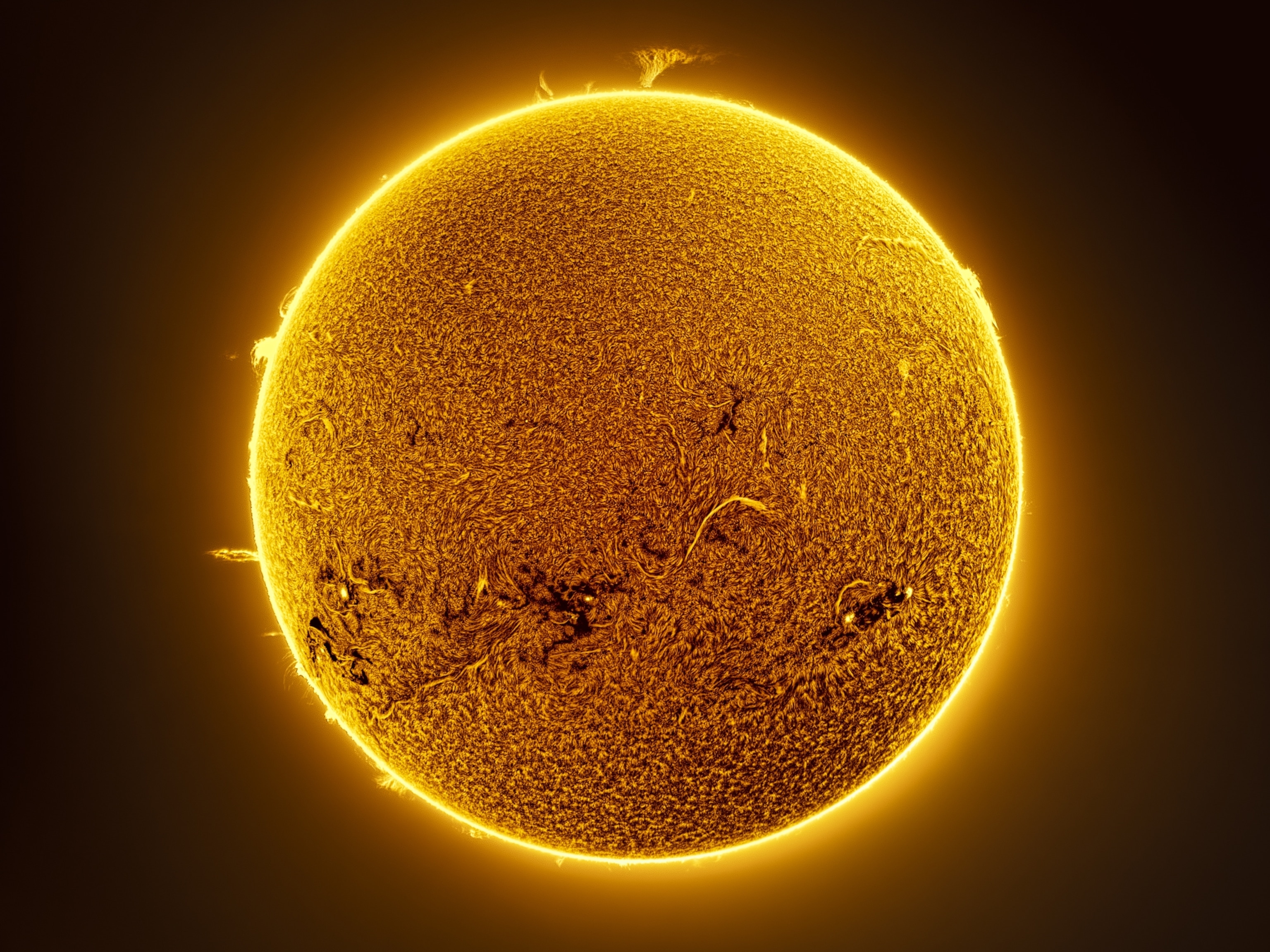
New "Sunquake" Trigger Found: Huge Solar Belches
Coronal mass ejections join solar flares as quake sources, study says.
Powerful earthquake-like events on the sun's surface, called sunquakes, can be set off by huge belches of charged particles from the solar atmosphere, scientists say.
Researchers had previously linked sunquakes to solar flares, eruptions on the sun that can send powerful bursts of x-rays, ultraviolet light, and matter into space. (See video: "Solar Flares Cause 'Sunquakes.'")
On February 15, 2011, researchers spied two sunquakes and a solar flare that occurred around the same time—but the flare wasn't hot enough to have spawned the seismic waves.
"The heat and radiation from solar flares is thought to drive a pressure wave to the surface, like thunder from a lightning bolt. But for this February 15th event, it wasn't like that," said Sergei Zharkov, a space scientist at University College London, who presented the new findings about sunquakes last month at the 2012 National Astronomy Meeting in Manchester, U.K.
Instead it appears the February sunquakes were linked to a coronal mass ejection, or CME, a huge cloud of charged solar particles that erupted from the sun's upper atmosphere.
(Related: "'Dark Fireworks' Seen on Sun—Blast as Big as Ten Earths.")
"This is the first time we've seen a sunquake associated with a coronal mass ejection," Zharkov said. "It's the first clear counterexample."
Sunquakes Pack Powerful Punches
Solar researchers in 1972 predicted the existence of sunquakes, which look like the circular ripples on a pond's surface after someone tosses in a stone.
It wasn't until 1998, however, that a team of scientists announced the first observed sunquake, found in 1996 data from NASA's Solar and Heliospheric Observatory. The 11.3-magnitude sunquake occurred following a solar flare, and it was 40,000 times more powerful than the 1906 San Francisco earthquake.
(See before-and-after pictures of the historic San Francisco quake.)
Zharkov and his team measured February 2011's set of sunquakes as each being a thousand times more energetic than last year's Tohoku earthquake in east Japan.
(Related: "Japan Earthquake Vibrations Nearly Reached Space.")
But instead of coming from a flare, the new sunquakes seemed to emanate from the ends of a contorted magnetic rope connected to the sun's surface, also the source of the observed CME.
Zharkov and colleagues' new observations suggest that several other forces—not just hot pressure from a solar flare—might trigger the sun's seismic events.
"One possibility is that jets of particles from coronal mass ejections might push the solar atmosphere down and cause sunquakes," Zharkov said.
Another theory is that piled-up magnetic field lines might send acoustic waves rippling through the sun's atmosphere. When these waves impact the solar surface and subsurface, the thinking goes, the reverberations could trigger sunquakes.
"At this point," Zharkov said, "we don't understand the mechanics [behind sunquakes]. The exact physical processes remain a mystery."
Sun Giving Us "Beautiful Data"
To wrestle the unknowns, Zharkov needs to see more sunquakes and gather additional data.
The good news for researchers such as Zharkov is that the sun is close to its 2013 solar maximum—the peak of a roughly 11-year cycle in solar activity. (Also see "Solar Flare Sparks Biggest Eruption Ever Seen on Sun.")
In addition, more and better sun-monitoring satellites are in place now than ever before.
The "most beautiful data," Zharkov said, comes from NASA's Solar Dynamics Observatory (SDO), which launched in 2010. That spacecraft will provide the best views yet of increasingly common sunquakes, he said.
"These sunquakes," Zharkov said, "are part of the puzzle of flares and coronal mass ejections, which have the most direct impact on space weather" that can disrupt satellites and cause auroras.
Zharkov's ultimate dream is to use sunquakes to "see" inside the sun, in much the same way seismologists use earthquakes to probe inside our planet.
"Sunquakes travel through the solar interior and contain some info about it," he said. "We'd like to capture that information to see below the sun's surface."





